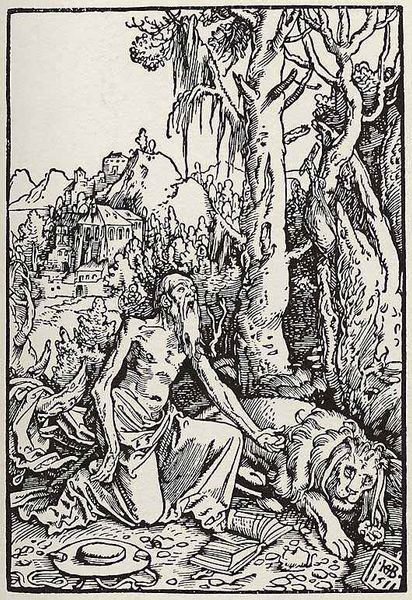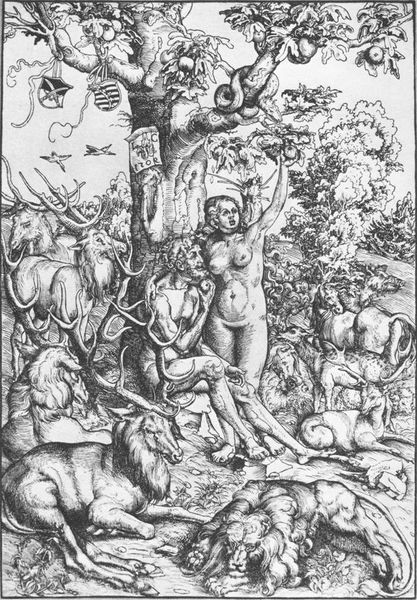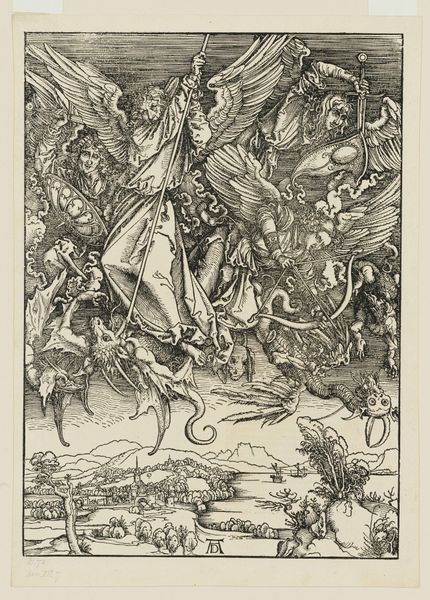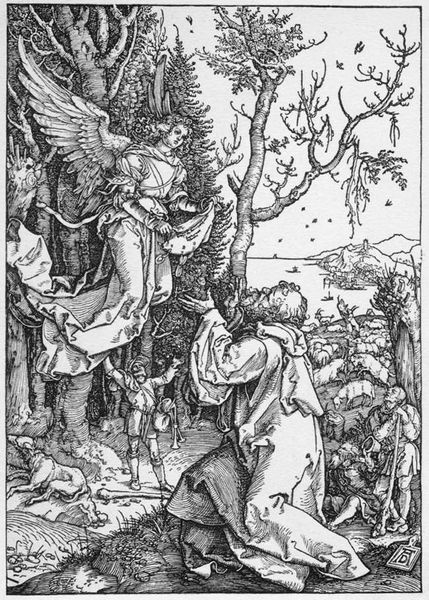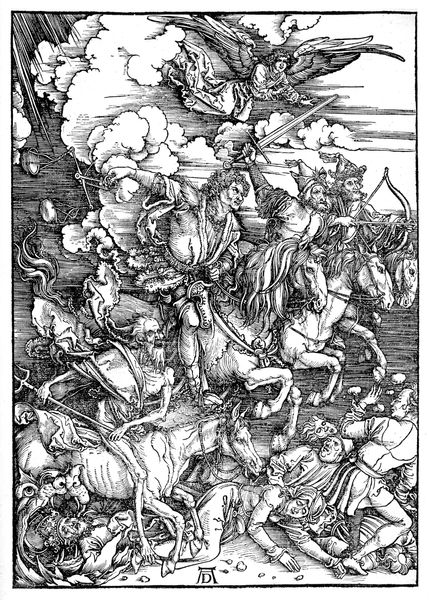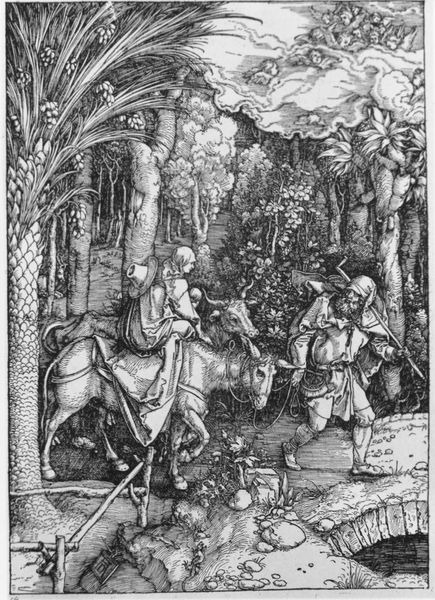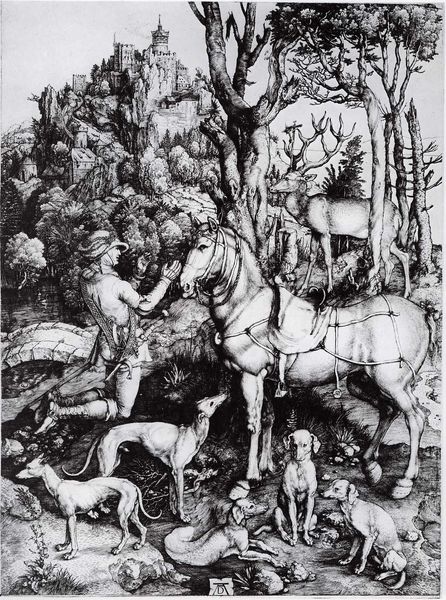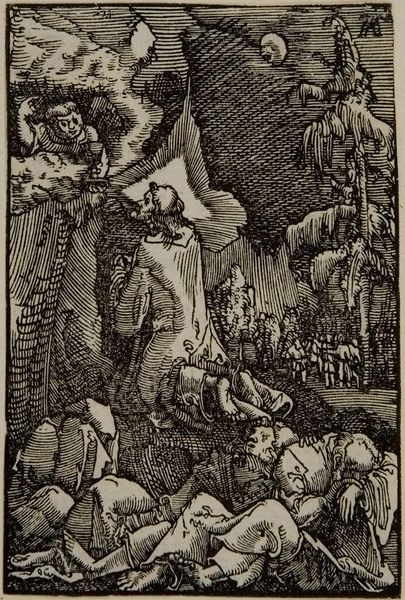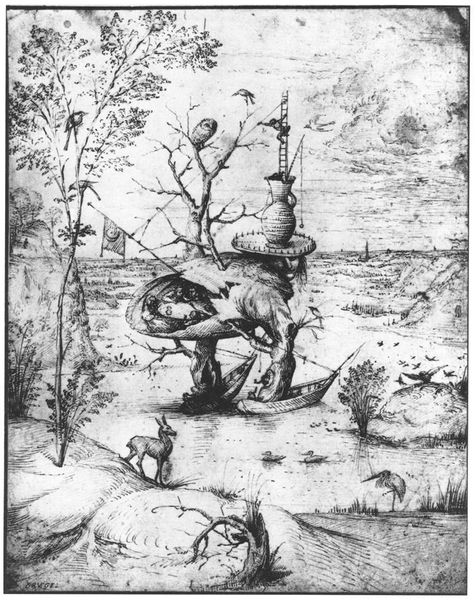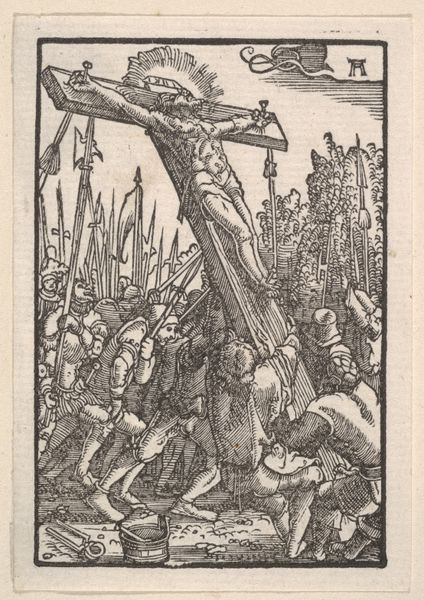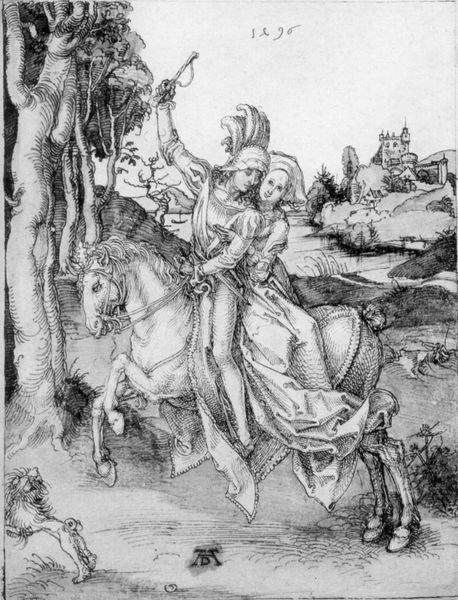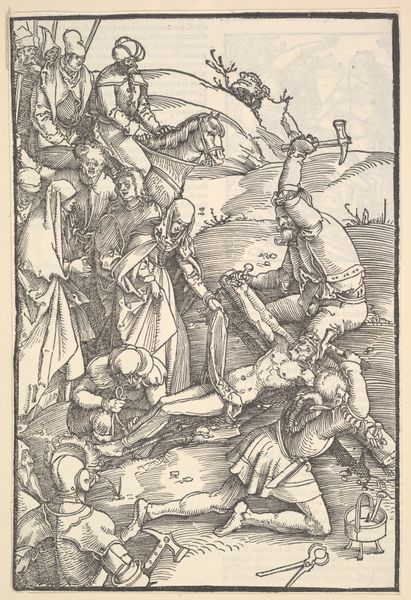
print, woodcut, engraving
#
medieval
#
narrative-art
# print
#
landscape
#
figuration
#
woodcut
#
christianity
#
line
#
history-painting
#
northern-renaissance
#
engraving
Dimensions: 19.6 x 15.1 cm
Copyright: Public domain
Editor: We're looking at Albrecht Altdorfer's woodcut, "St. George Killing the Dragon," made in 1511. The sheer detail in such a small print is astonishing! It’s also remarkably busy, all these elements jammed together in the composition… what strikes you most about it? Curator: What immediately jumps out is how Altdorfer uses this well-known narrative to explore ideas about civic identity. This isn't just a religious image; it's deeply intertwined with the socio-political climate of the Holy Roman Empire. Editor: How so? It just looks like a cool, if crowded, fight scene! Curator: Consider where prints like these were displayed. They weren't just for churches; they were affordable, portable images seen in homes, town halls, and even taverns. St. George, the slayer of the dragon, was increasingly adopted as a symbol of the free imperial cities' fight for autonomy against feudal lords and even against perceived threats like the Ottoman Empire. Does that change how you see it now? Editor: I guess so. I was focused on the cool-looking dragon! But, thinking of St. George as a political symbol… that gives the image a whole different weight. Curator: Exactly. Altdorfer uses the power of print to engage the public with these ideas, making art not just beautiful, but a vehicle for shaping collective identity. Notice how the city is rendered in the background. It seems serene, like a future guaranteed by George's actions. Editor: So, this small, detailed print was actually a piece of political messaging? Curator: Precisely! It shows how art is always functioning within specific historical, cultural and institutional frameworks. The museum or gallery conditions may also shape and filter reception. Editor: Wow, I hadn’t considered the social and political role this artwork played when it was first made. Now it has shifted my attention beyond simply analyzing the artistic and technical skill. Curator: Indeed, and now you realize why historians of art delve deeply into original context, and consider the public role of artworks in shaping society and expressing particular worldviews.
Comments
No comments
Be the first to comment and join the conversation on the ultimate creative platform.
